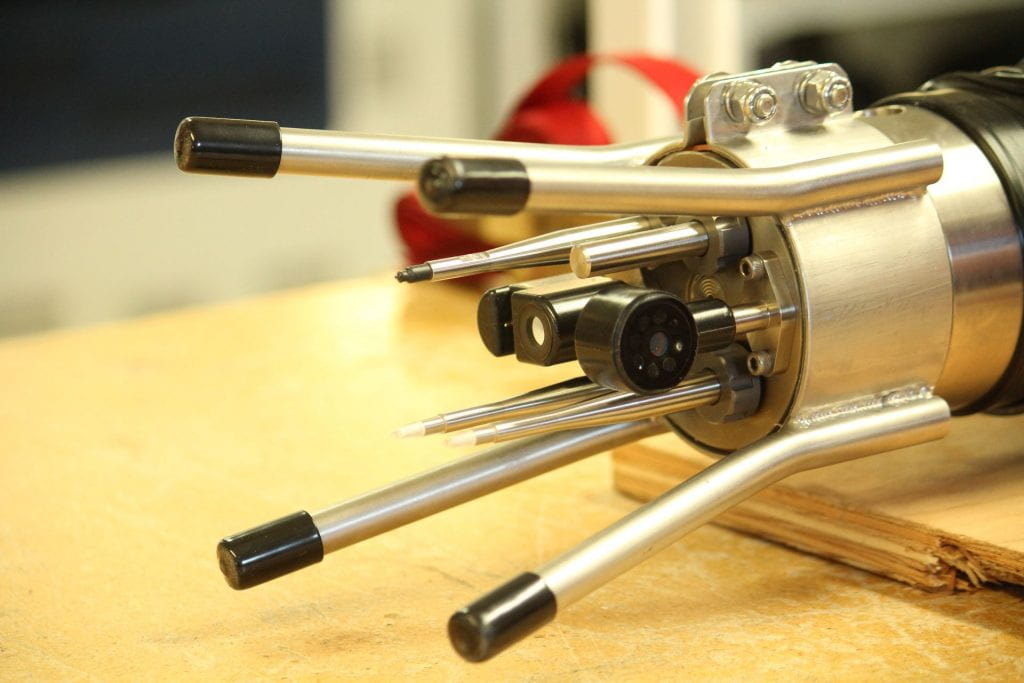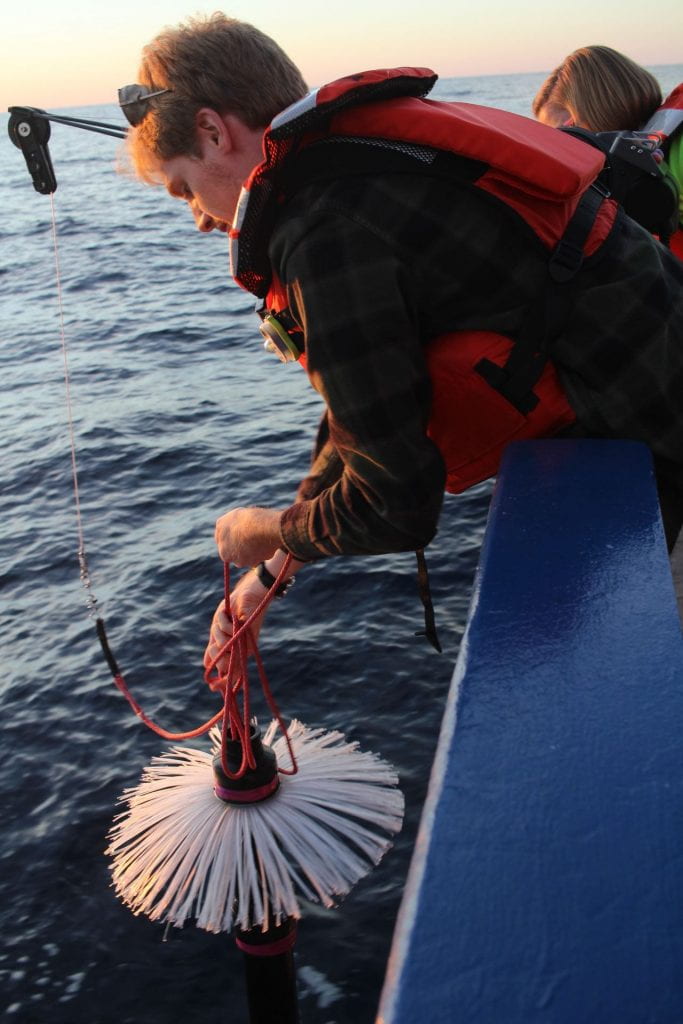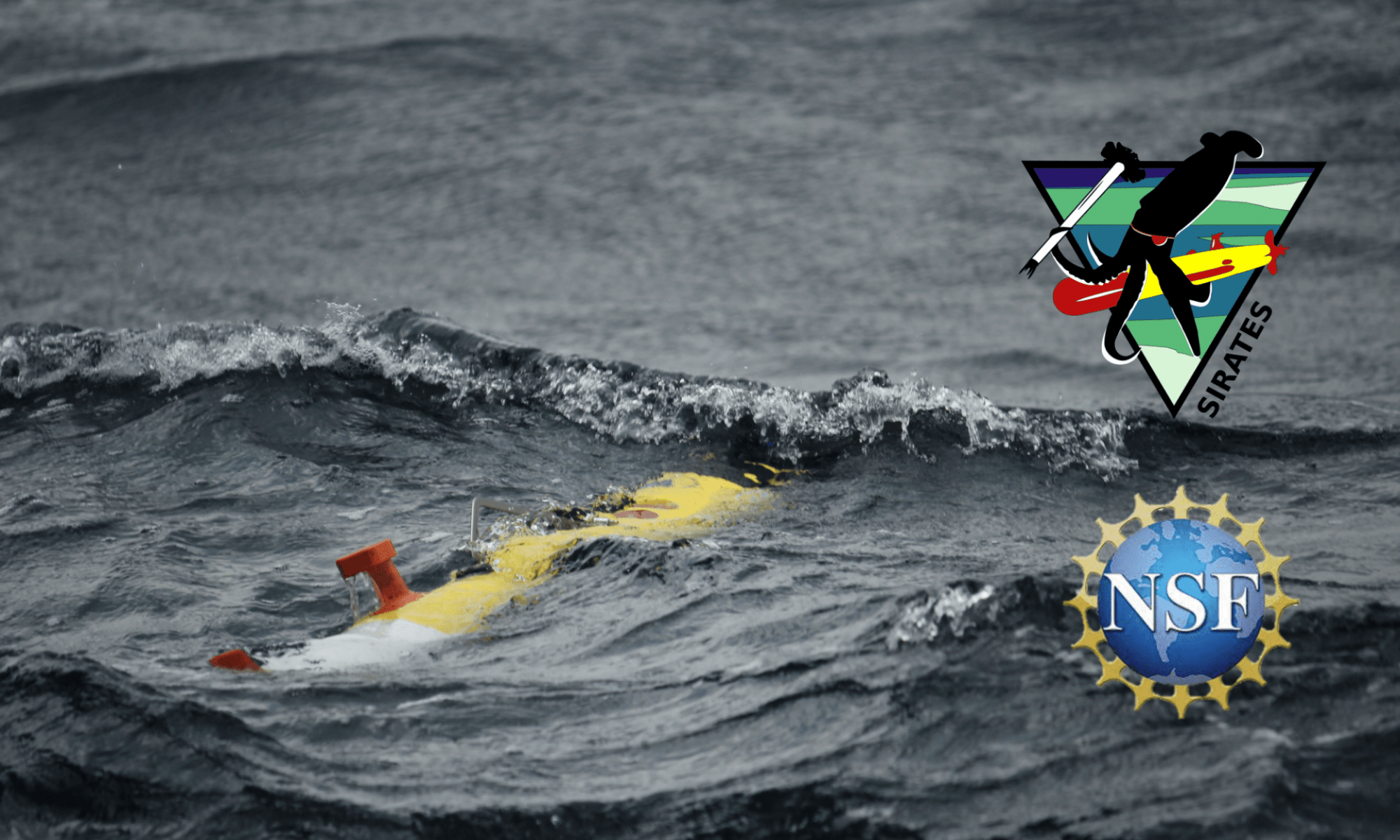What is the VMP?
The vertical microstructure profiler (VMP-250 by Rockland Scientific) is a loosely-tethered instrument which allows us to measure the small scales where energy dissipation and mixing occur. The profiler is equipped with two velocity-shear probes, so that turbulent kinetic energy (TKE) dissipation can be quantified even in well mixed areas. The shear probes are 8.5 mm long and 4.7 mm wide, and they directly measure small fluctuations in velocity-shear at a sampling rate of over 500 Hz. These probes can be thought of like record needles encased in silicone which measure tiny deflections due to the forces caused by fluctuations in velocity. The VMP also measures pressure (for depth), fluorescence (for chlorophyll-a), turbidity (for clarity), and conductivity (for salinity) with high precision and resolution.

How is the VMP deployed?
While the ship travels at 3-4 knots, the VMP is towed behind the vessel and “released” so that it free-falls vertically under its own negative buoyancy at a constant smooth velocity. This velocity is pre-determined by adjusting the weight of the profiler so that it falls at a velocity that optimizes the sampling resolution (in this case ~0.7 m/s). While the VMP is falling, the tether to the vessel must be slack, so that the motion of the ship is not felt by the instrument. When the VMP reaches the target depth (~50 meters for this experiment) it is retrieved using a deep sea electric fishing reel (Lundgren-Pitman S-1200) which pulls it back to the surface near the stern of the vessel, where it can be released again to take another profile at the new location. In this way we get a series of high resolution profiles in both space and time. This method of profiling s called “tow-yoing,” a combination of towing and yo-yoing.

What can we learn with the VMP?
Using the VMP, we will make high resolution measurements of temperature and velocity shear through the intrusions. These measurements enable us to determine the rate at which the intrusions are mixed and diffused by turbulence, which in turn plays a role in their onshore evolution and impact on shelf water mass properties. We will be looking out for wind events, internal tides, and solitary waves, all of which can generate shear and turbulence within the water column and potentially enhance the diffusion of the intrusions. We will also assess the competing role of thermohaline mixing via processes such as double diffusion and salt fingering in salinity intrusions.
